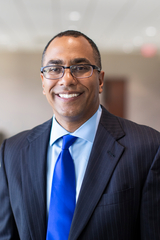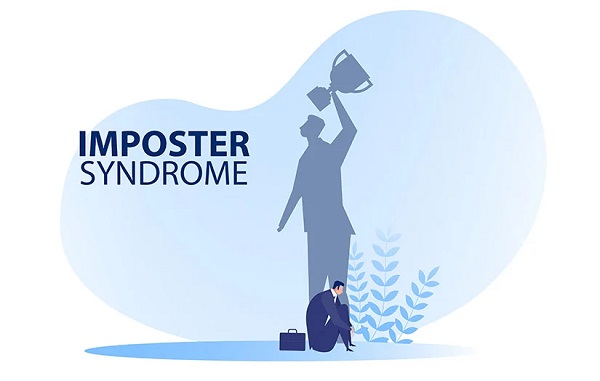By: David A. Grenardo, Professor of Law and Associate Director of the Holloran Center for Ethical Leadership in the Professions, University of St. Thomas School of Law
The revised ABA standards mandate that law schools provide substantial opportunities for their law students to develop their professional identities. Prior to the revised standards, some schools had already created mandatory 1L classes that entail some type of professional identity formation. The Holloran Center’s website lists schools with their corresponding classes that include professional formation or professional development, and the Holloran Center continues to add syllabi for each of those classes. The classes range from 0 credits to 8 credits.
Before joining the University of St. Thomas School of Law, I created and taught an upper-level course that intentionally and explicitly introduced the concepts of professional identity and professional identity formation. The overwhelming response from the students who took the class was extremely positive.
After attending one of the Holloran Center’s workshops in 2016, I came back to my law school at the time (St. Mary’s University School of Law) on fire with a determination to create a course that introduced professional identity to students and allowed students to develop their professional identities. I drafted a course proposal and submitted it to the faculty committee, but the class failed to obtain a majority of the committee’s approval. The full faculty did not approve the proposed course.
Four years later, I had gained a more thorough understanding of professional identity formation and decided to design another professional identity formation course. In creating the class, I spoke with law students to hear what they thought would be useful and interesting. For instance, as St. Mary’s is a Catholic and Marianist law school, I wanted to incorporate some basic Catholic principles and concepts, such as the Catholic Social Teachings, and the origins of the Marianist Order, to help students discover how those concepts and information might be incorporated into their own approach to the law. The students thought that idea was good, but they strongly suggested that a survey of the major spiritual traditions would provide broader perspectives on how to approach life as an individual and a professional. As a result, I added an entire section to discuss the basic history and tenets of Judaism, Islam, Buddhism, Hinduism, Christianity, and secular spirituality. I also added a writing assignment in which students wrote about how two different faith traditions would approach a current legal issue. Adding this section resulted in three major effects:
1) students gained an appreciation of other spiritual traditions and examined how they could incorporate some of those traditions’ teachings into their own lives;
2) students learned about the vast similarities between the different faith traditions; and
3) learning about other types of spiritual traditions enhanced the students’ cross-cultural competency.
That writing assignment should also help students understand the different viewpoints that clients and team members may bring when they work with others. One student specifically mentioned that he had no idea how similar Islam and Catholicism are until he took this class, and he was disavowed of a number of negative stereotypes and misconceptions about Islam that were promulgated through movies he had seen.
The course description in the course proposal I submitted, which was approved by both the curriculum committee and later the faculty, stated the following:
Course Description:
This course enables law students to identify characteristics important to being good lawyers and characteristics employers of all kinds are looking for in graduating law students. Law students will also explore ethical and moral dilemmas through inter-faith discussions that will allow them to continue to develop their own moral compasses and professional identities. In particular, faculty and practitioners of different faith traditions and value systems (e.g., Catholic, Jewish, Buddhism, Muslim, atheism, etc.) will work through ethical and moral situations faced by lawyers and share how their particular faith or value-system affects their decision-making. Students will also examine how their own faith traditions, as well as the Catholic and Marianist traditions, apply to their own practice of law and to current legal issues today, such as women’s rights, LGBTQ+ issues, environmental justice, the death penalty, immigrant justice, racial injustice, and social justice. Finally, the class will encourage students to see the practice of law as a calling and their vocation, which will help in their search for meaningful employment that allows them to make a living, serve others, and find joy.
The grades were based entirely on papers regarding, among other things, reflections on what type of lawyers they wanted to be, how they would fulfill all of their vocations (e.g., as lawyer, spouse, sibling, daughter/son, friend) as professionals, and how they changed in law school for better and/or for worse. Several additional writing assignments, including drafting a eulogy for themselves (an exercise I borrowed from Neil Hamilton’s Ethical Leadership in Organizations class) and interviewing a lawyer about one of their dream jobs, are described in the edited syllabus for this class (see below).
I also invited a number of graduates to speak to the class. The guest speakers included a judge and lawyers who practiced in a variety of areas, such as Big Law and solo practitioners. After a couple of guest speakers talked about finishing near or at the top of the class, the class requested a speaker who did not finish near the top of the class yet enjoyed a successful legal career. I obliged, and the students truly appreciated that speaker and all of the speakers they heard.
The last day of class we went on a retreat off campus at Tecaboca, a retreat facility just outside of the city of San Antonio. During the four-hour retreat, we talked about the class, and I also gave them time to reflect on their own, with others, and ultimately write a letter to their future self in five years. We enjoyed lunch together as well. Some of the students said it was their most meaningful and memorable experience of law school. It was a moving and powerful experience for me, too, as I felt connected to these students and their professional identity development.
A common theme in the students’ reaction to the class was that the class should be mandatory for all students (although the experience/dynamic would be different if the class was required rather than elective). The law students expressed their appreciation and gratitude for the opportunity to engage in self-reflection and to explore what areas of law they would most enjoy and what would bring them joy during and after their legal careers.
Below is an edited syllabus of the class that does not include university and class policy language regarding attendance, laptops, accommodations, etc. The edited syllabus below is also attached here.
Should you have any questions or comments about the course, please email me at gren2380@stthomas.edu.

David Grenardo is a Professor of Law and Associate Director of the Holloran Center for Ethical Leadership in the Professions at the University of St. Thomas School of Law.
FOUNDATIONS OF LAWYERING SYLLABUS
LW7613 COURSE GOALS:
By the end of the course you will:
- Understand that the legal profession is a vocation, identify your gifts and talents, and analyze the places where you likely fit into the legal profession based on your own talents and passion.
- Understand the characteristics and traits that make up an excellent law student and lawyer, and analyze how you can improve in those areas.
- Identify the ethical and moral dilemmas that you may face as a lawyer, and continue to develop your own moral compasses by analyzing how you would respond to those dilemmas.
- Identify the key aspects of the Marianist origin and traditions, as well as your own faith tradition, and analyze how you can incorporate aspects of the Marianist origin and traditions and your own faith tradition into your life and career.
- Understand the Catholic and Marianist traditions, particularly the Catholic Intellectual Tradition and Catholic Social Teachings, and apply those traditions and other faith traditions to your practice of law and to a current legal issue today such as women’s rights, LGBTQIA+ issues, environmental justice, the death penalty, immigrant justice, racial injustice, and social justice.
COURSE STRUCTURE:
The required text for this class is The Formation of Professional Identity: The Path From Student to Lawyer by Patrick Emery Longan, Daisy Hurst Floyd, and Timothy W. Floyd. Moreover, there will be classroom handouts and materials (many are listed below in the Assignments section) made available on Canvas that will supplement the source material.
READING ASSIGNMENTS AND PREPARATION:
Assignments
Unit I: Vocation and Professional Identity Formation
Class: Vocation
Readings: Susan J. Stabile, The Practice of Law as Response to God’s Call, 32 Seattle U. L. Rev. 389 (2009);
Pages 365-371, 391-395, and 400-403 from Jerry Organ, From Those to Whom Much Has Been Given, Much Is Expected: Vocation, Catholic Social Teaching, and the Culture of a Catholic Law School, 1 J. Cath. Soc. Thought 361 (2004)
Class: Exploring Vocation and Exemplary Law Student and Lawyer Characteristics
Reading: Neil Hamilton, Connecting Prospective Law Students’ Goals To The Competencies That Clients And Legal Employers Need To Achieve More Competent Graduates And Stronger Applicant Pools And Employment Outcomes, 9 St. Mary’s J. Legal Mal. & Ethics 260 (2019)
Class: Exploring Vocation and Exemplary Law Student and Lawyer Characteristics Continued
Readings: Lawrence S. Krieger & Kennon M. Sheldon, What Makes Lawyers Happy? A Data–Driven Prescription to Redefine Professional Success, 83 Geo. Wash. L. Rev. 554 (2015);
14 Questions from Neil W. Hamilton’s Roadmap: The Law Student’s Guide to Meaningful Employment, 2d ed., American Bar Association, 2018
Class: Professional Identity Formation, Introduction and Overview, Motivation
Reading: Excerpts from The Formation of Professional Identity: The Path from Student to Lawyer by Patrick Emery Longan, Daisy Hurst Floyd, and Timothy W. Floyd, 2020
Class: Professional Identity Formation, Competence, Fidelity to the Client
Reading: Excerpts from The Formation of Professional Identity: The Path from Student to Lawyer by Patrick Emery Longan, Daisy Hurst Floyd, and Timothy W. Floyd, 2020
Class: Professional Identity Formation, Fidelity to the Law, Public Spiritedness
Reading: Excerpts from The Formation of Professional Identity: The Path from Student to Lawyer by Patrick Emery Longan, Daisy Hurst Floyd, and Timothy W. Floyd, 2020
Class: Professional Identity Formation, Civility, Practical Wisdom, Future of Legal Profession
Reading: Excerpts from The Formation of Professional Identity: The Path from Student to Lawyer by Patrick Emery Longan, Daisy Hurst Floyd, and Timothy W. Floyd, 2020
Class: Interview with a Practicing Lawyer
Assignment: outside of class students will interview a lawyer or individual who has one of the law student’s dream jobs
Unit II: Learning From the Wisdom Traditions
Class: Jewish Spirituality
Reading: Spirituality: A Guide for the Perplexed by Philip Sheldrake
Class: Christian Spirituality
Reading: Spirituality: A Guide for the Perplexed by Philip Sheldrake
Class: Muslim Spirituality
Reading: Spirituality: A Guide for the Perplexed by Philip Sheldrake
Class: Hindu Spirituality
Reading: Spirituality: A Guide for the Perplexed by Philip Sheldrake
Class: Buddhist Spirituality
Reading: Spirituality: A Guide for the Perplexed by Philip Sheldrake
Class: Secular Spirituality
Reading: Spirituality: A Guide for the Perplexed by Philip Sheldrake
Unit III: Catholic & Marianist Traditions
Class: Introduction to the Catholic Intellectual Tradition
Readings: The Catholic Intellectual Tradition: Core Principles for the College or University, Association of Catholic Colleges and Universities, 2017;
The Catholic Intellectual Tradition: A Conversation at Boston College, 2010;
Pages 403-412 from John M. Breen, Justice and Legal Education: A Critique, 36 Loy. U. Chi. L.J. 383 (2005)
Class: Catholic Social Teaching
Reading: Pages 113-165 from SJ Thomas Massaro, Living Justice: Catholic Social Teaching in Action, 2000
Class: Introduction to the Marianist Tradition
Reading: Excerpts from John Habjan, S.M., Society of Mary: Marianists, Catholic Education: A Journal of Inquiry and Practice, Vol. 11, No. 2, December 2007, 198-217, University of Notre Dame
Class: Marianists and Higher Education
Reading: Characteristics of Marianist Universities, Association of Marianist Universities, Chaminade University, St. Mary’s University, University of Dayton, 2019;
Reading: David A. Grenardo, Marianist Law Schools: Demonstrating the Courage to be Catholic, 60 J. Cath. Legal Stud. (2022 Forthcoming)
Class: Retreat
Reading: Excerpts from William L. Droel, The Spirituality of Work: Lawyers, 1989
GRADES:
Final grades will be based on the completion of journal entries (70%), a short paper regarding a current legal topic analyzed through faith tradition (15%), and a eulogy (15%). Grades can also be increased or decreased as set forth above.
Journal Entries (70%):
Students are required to submit journal entries throughout the semester as requested by the professor. I will give you ample time to submit each entry. These journal entries will be treated confidentially.
Purpose. Journal entries are neither research assignments nor reports on the reading or what speakers said. They are designed to help each student reflect upon and integrate assigned readings and class discussions on a topic with her or his own faith and ethics. The impact of the presentation, readings, and discussions on the student’s pre-class view of the topic is important.
Content. Throughout the semester, the student will be responsible for journal entries that answer specific questions relating to the assigned readings, speaker presentations, and class discussions. Be sure to mention at least some of the readings in your journal entries.
One of the journal entries will be based on an interview you set up and conduct with an attorney or individual who currently has one of your dream jobs. Your journal entry will answer the following questions: How they reached their current position? What advice do they have for you to do the same? What is your plan to reach that position? The interview, which you must arrange and schedule, will take the place of a class period.
Grading. Journal entries must be between 600 and 750 words, typed and double spaced. Indicate word count on each journal entry. Even if you are absent for a class covering a particular journal topic, you still must submit a journal entry for that topic.
Short Paper Using Faith Traditions (15%):
This paper will include analysis of a current legal topic through the lens of multiple (2 or more) faith traditions. You must examine a current legal topic and analyze how it would be resolved through the lens of two or more faith traditions. Areas where current legal topics can be found are listed below, but this list is certainly not exhaustive.
- Social Justice
- Women and Justice
- Economic Justice
- Racial Justice
- Environmental Justice
- Orientation and Justice
- “Consistent Life Ethic” Issues: Abortion, War, Death Penalty, Euthanasia
The paper must be between 750 and 1,000 words, typed and double spaced. This paper is due April 28th.
Eulogy Assignment (15%):
Purpose. Stephen Covey, author of 7 Habits of Highly Effective People, advises each of us “to begin with the end in mind.” One method of doing so is to think through what you hope your eulogy might be. I hope you do not see this exercise as morbid. For a spiritual person, thinking about dying is simply thinking about what we must transcend with God’s help. If the eulogy exercise is too difficult for you, see the alternative below under Content.
Content. First, reflect on the eulogies you have heard in your lifetime. Which ones had the most profound impact on you? Why? Then ask yourself, “What I most want people to remember about me is _____. “ Or “At the end of my life, what I would like to know about myself is ________.” Next, does your eulogy reflect your values and principles? Is it clear to what you have given your heart in life?
If the eulogy exercise is too difficult for you, you can do this exercise by thinking about your life as a book, and you are writing chapters as you live your life. What is the theme of your book? What is the theme of the particular chapter you are living now? Write down the likely topics of the chapters you see ahead of you.
Also, speak with at least two people to discuss this assignment. One of them should be over 60 and retired. Ask them about their life in terms of how they would have answered the question above at your stage in life, and how they answer the question now at their stage of life. Have they changed their minds about what the “end” of their life should be? How do they describe “to what have I given my heart?” What is their legacy? What advice do they have about your legacy? You must include some reflection on what you find out from these interviews in your written eulogy.
Grading. The eulogy must be between 750 and 1,000 words, typed and double spaced. It will be treated confidentially. You will receive full credit for completing the assignment as stated above. Unsatisfactory work must be revised and resubmitted until it is acceptable to the professor. Indicate word count on the eulogy.
The Eulogy is also due April 28th.



